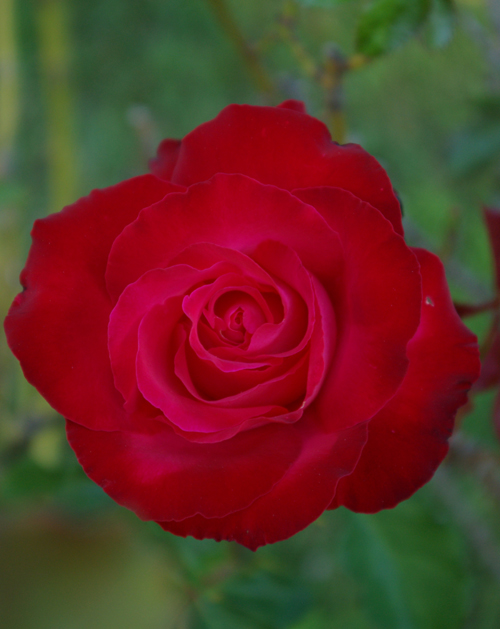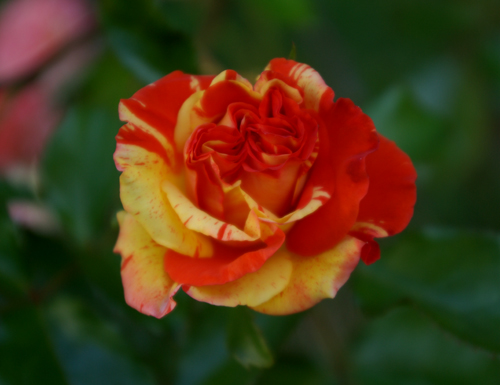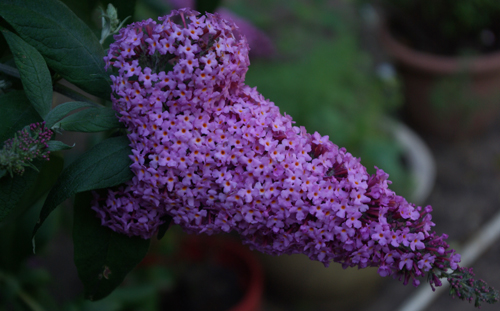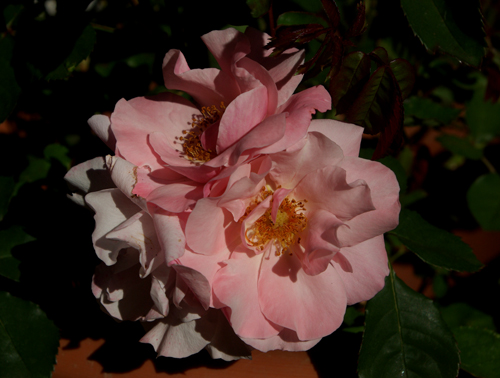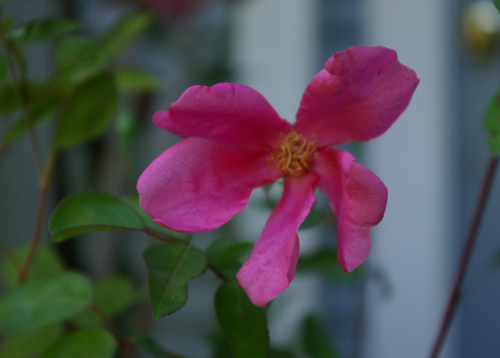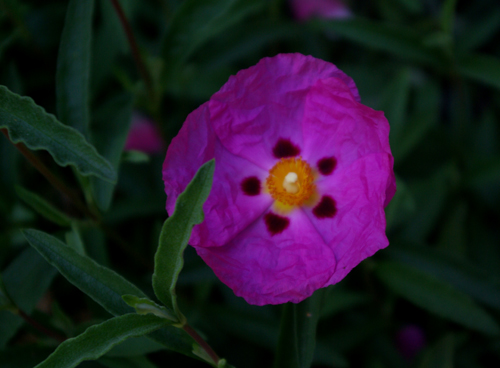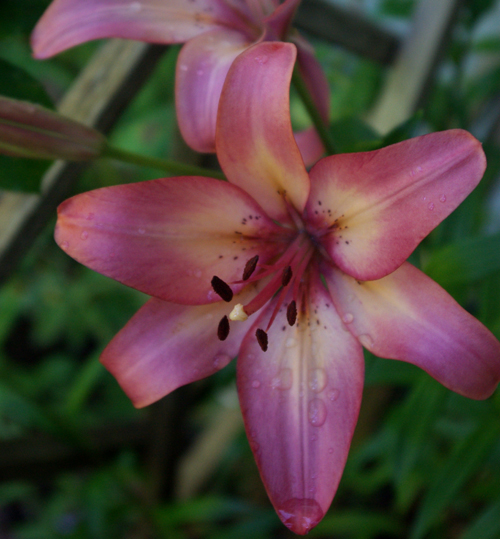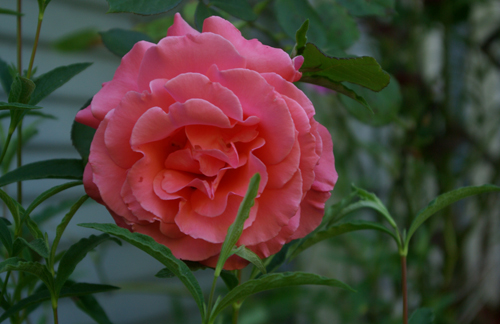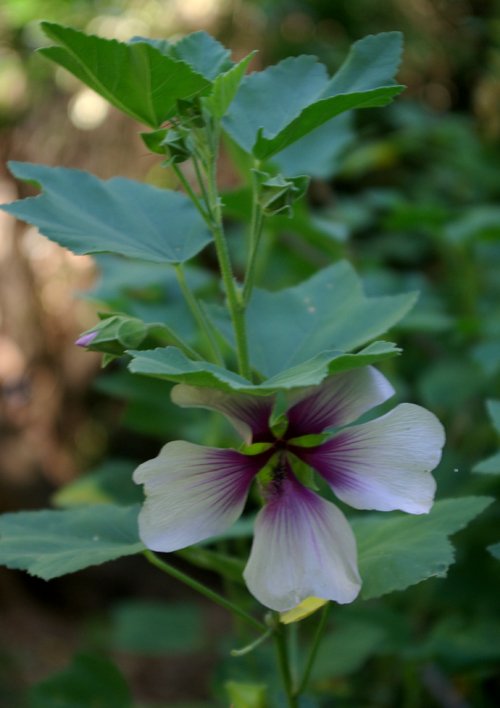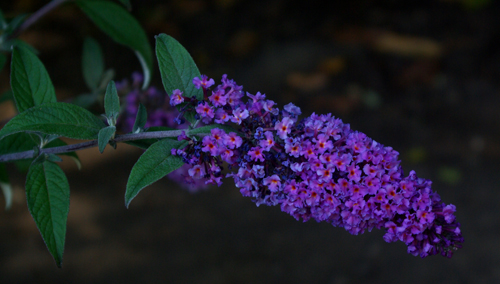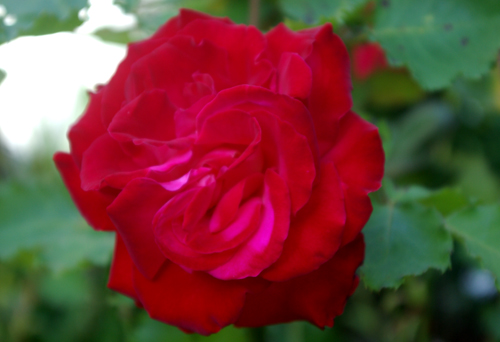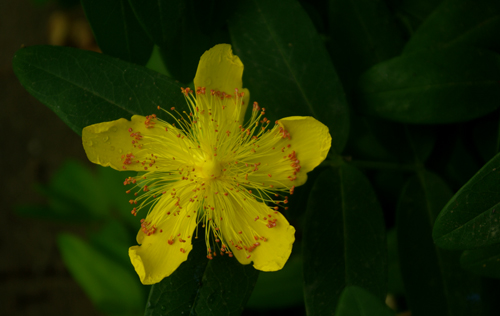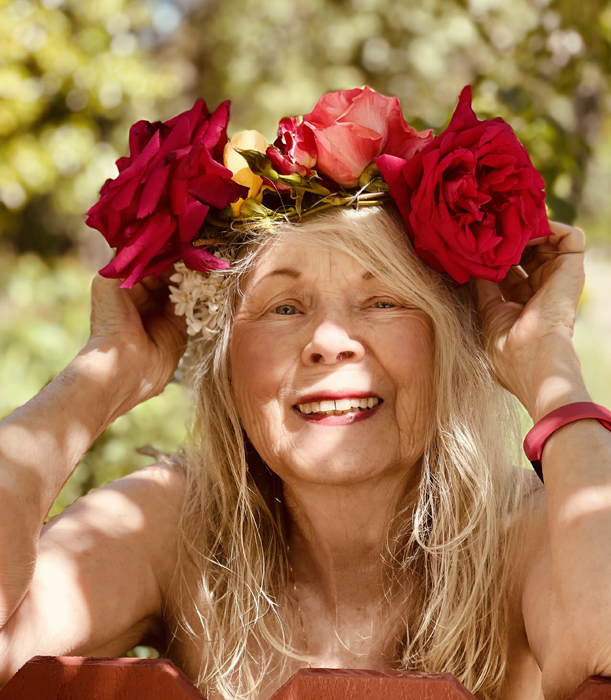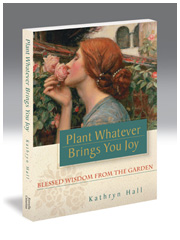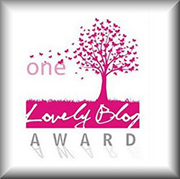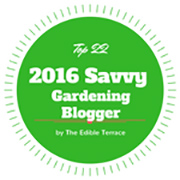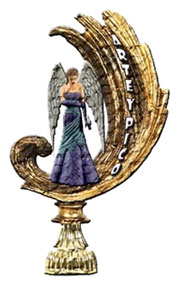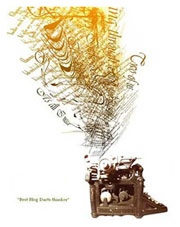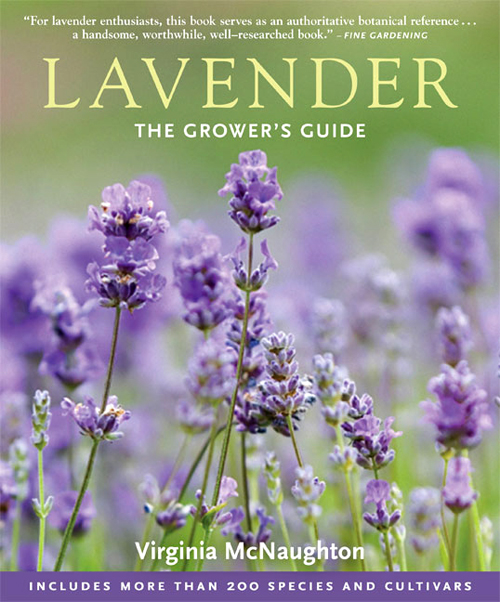
For far longer than I care to ponder I’ve had a rather hazy relationship with lavender. I know it when I see it. I’ve grown it successfully in the dampness of North Carolina, the deserts of Arizona and the lush soils of California. But could I tell you any details? Not really. So I jumped at the opportunity Timber Press afforded me when they published Lavender: The Grower’s Guide by New Zealand horticulturist Virginia McNaughton.
In my own garden I have a huge plot of lavender in bud, captured here on a recent foggy morning. From my reading this book I believe these are angustifolias, the spindly, skinny versions that we most commonly see in gardens.
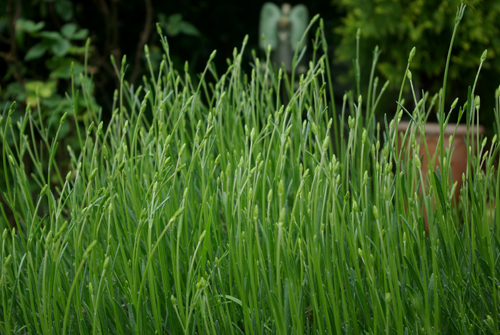
I love the lavender at this stage. It is already ripe with perfume when I water it or brush by it. But I am filled with anticipation of what is about to unfold, because ultimately, this is what this lavender patch will look like, as it did last summer.
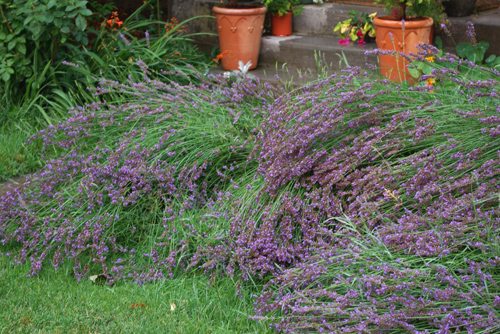
And then it will be a mass of bees and butterflies for weeks and I adore that stage of its life (and mine). This plant is, indeed, a gift to all the bees in your neighborhood.
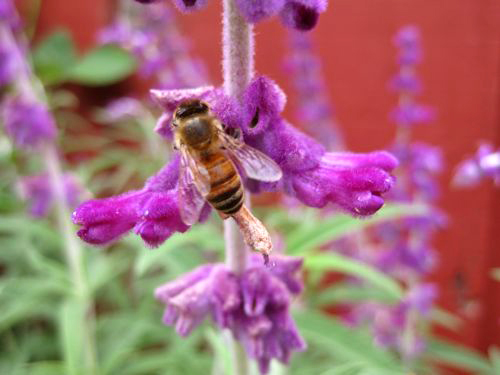
happy bee photo courtesy of Antonia Hall
Also gracing my garden are the lavenders called Stoechas. They appear to have little wings on top and are very endearing. Propagation requires taking soft wood cuttings from the plant.
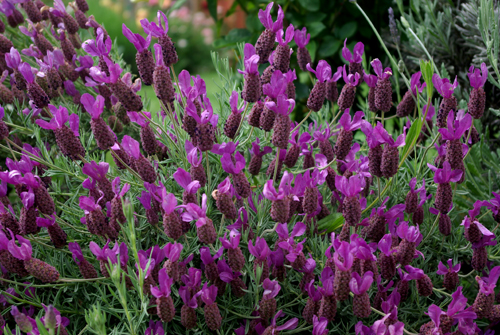
Lavender has been a regular part of my life for many years now. I use lavender oil regularly in my baths. And I never fail to take a bottle of lavender oil with me when I travel as I know the restorative powers of its fragrance, sprinkled on a pillowcase or, again, in a relaxing bath to take the stress out of travel. The bottle (found at any good health food store) is so small one can easily drop into ones purse and be relied upon as a quick resource when one needs a mental adjustment. I liked the lavender notes in the introduction to this book that read:
“Spiritually, lavender is considered a plant that will raise perceptiveness and take an individual to higher states of consciousness during mediation. Since fabled Lemurian times, special devas or plant guardians were appointed to look after the plants until such time as mankind was able to absorb greater knowledge. Its therapeutic use in aromatherapy and its wide range of healing applications as well as other fragrant and ornamental uses make lavender one of the most versatile of herbs. It is truly a magical plant and those who have ever been enticed and enchanted by its sweet, heady perfume become enamoured for life.”
Yes, I’d say I’m a lifelong fan. You?
Looking about my own environs I discovered a neighbor who had used lavender in a very efficient and beautiful way, lacing it with other plants such as roses, guara, and rock rose, creating a natural boundary between her property and the sidewalk that ran before her home. What a lovely “fence”!
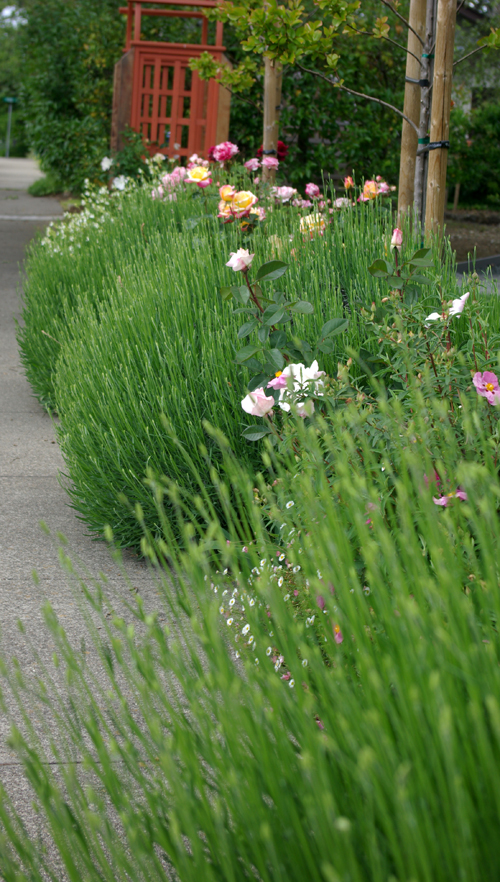
Happily, Lavender: The Grower’s Guide will serve as the only book you will ever need to identify more than 200 species and cultivars of lavender, and will provide you with all the information you will need to lovingly include this most exquisite addition to your garden. Enjoy!
Love and gardening blessings,
Kathryn xoxo
Footnote pics for Ewa in Poland (See comment below! :)):
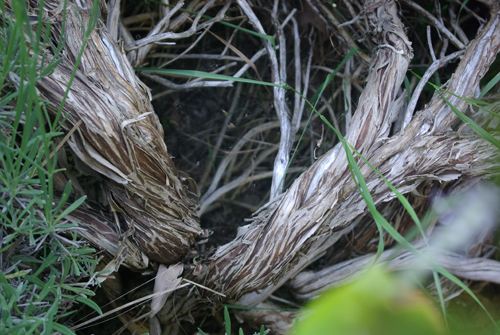
So this is the very old structure holding this in place, Ewa. Have you ever seen lavender this old? No? Neither have I. The woman who most likely planted this was the wife of the man who built this house many decades ago. And this is a small town so old timers remember that she was president of the local gardening club! So in our nineties this is what we apparently have to look forward to in our gardens! 🙂 I guess!
And following is what that patch of lavender looks like at the moment. But within a month or so after all the bees have gathered all their pollen and the butterflies have come to visit and the lizards have hidden underneath it [anyone remember?] it will simply fall over from all the love and visitors. Think of it as the Velveteen Rabbit of Lavenders. 🙂 xoxo
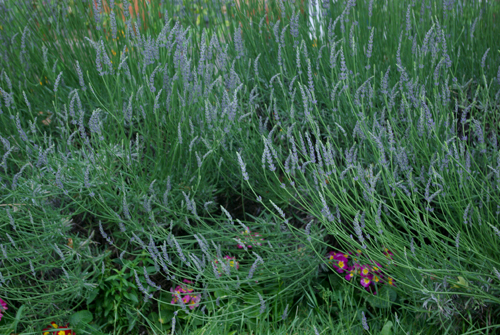
Posted on June 6th, 2010 by Kathryn
Filed under: Book Notes | 14 Comments »
